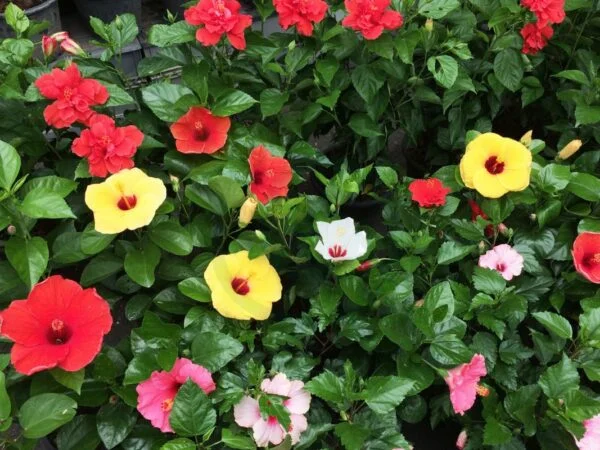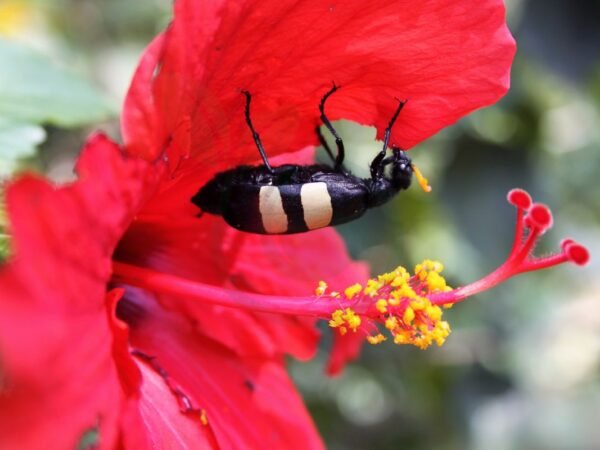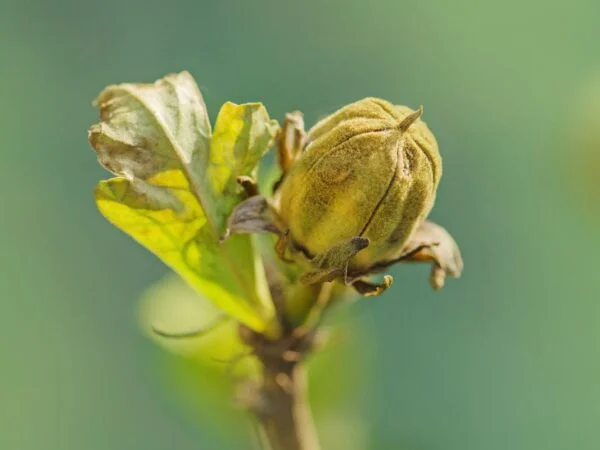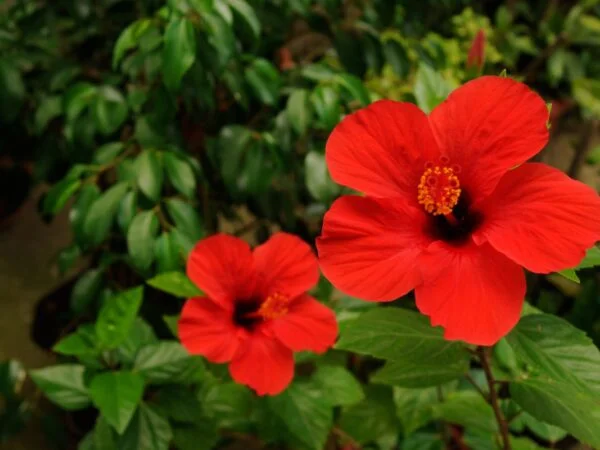Wondering how to keep your tropical plants thriving inside your home? With the right care, your indoor tropical plants like hibiscus can bloom beautifully all year round. From proper watering techniques to ideal lighting conditions, we've got you covered with expert tips and tricks.
Indulge in our comprehensive guide tailored to help you become a pro at nurturing your indoor hibiscus plant. Discover the secrets to maintaining lush foliage and vibrant blooms, ensuring your plant remains healthy and happy. Whether you're a seasoned gardener or just starting out, our insights will elevate your indoor gardening game and have you enjoying the beauty of your hibiscus plant in no time.
Key Takeaways
-
Selecting the Perfect Spot
-
Place your hibiscus plant near a sunny window with indirect light for optimal growth.
-
-
Watering Your Hibiscus
-
Water your hibiscus plant when the top inch of soil feels dry to the touch, ensuring proper drainage.
-
-
Temperature and Humidity
-
Maintain a consistent temperature between 60-70°F and humidity levels of 50-60% for a healthy hibiscus.
-
-
Pruning for Health and Blooms
-
Regularly prune dead or overgrown branches to promote new growth and vibrant blooms.
-
-
Fertilizing for Growth
-
Feed your hibiscus plant with a balanced fertilizer every 4-6 weeks during the growing season to encourage lush foliage.
-
-
Pest and Disease Management
-
Keep an eye out for common pests like aphids and spider mites, and address any issues promptly with natural remedies or insecticidal soap.
-
-
Encouraging Blooms Indoors
-
Mimic outdoor conditions by adjusting light exposure and temperature to stimulate blooming in your indoor hibiscus.
-
-
Repotting Essentials
-
Repot your hibiscus plant every 2-3 years in well-draining soil to prevent root-bound conditions and promote healthy growth.
-
-
Seasonal Care Tips
-
Adjust your care routine based on seasonal changes, providing extra warmth in winter and increased humidity during summer months.
-
Selecting the Perfect Spot
Sunlight Exposure
-
Place hibiscus plants near the sunniest window to ensure optimal growth.
-
Ensure adequate sunlight for hibiscus to encourage blooming and healthy development.
-
Consider using artificial lighting if natural sunlight is limited in your indoor space.
Temperature Considerations
-
Maintain a room temperature above 50 degrees Fahrenheit to keep your hibiscus healthy.
-
Avoid exposing your hibiscus plant to cold drafts from doors or windows, which can harm it.
-
Regularly monitor indoor temperatures to prevent any stress on the plant due to temperature fluctuations.
Avoiding Drafts
-
Keep your hibiscus away from drafty areas to prevent sudden temperature changes.
-
Shield your hibiscus from direct drafts that could potentially damage its health.
-
Create a barrier between your hibiscus plant and any sources of drafts for added protection.
Watering Your Hibiscus
Identifying Needs
Soil Moisture
-
Water hibiscus when the soil feels dry to the touch.
-
Check soil moisture levels regularly, especially in dry indoor environments.
-
Adjust watering frequency based on soil moisture to prevent overwatering.
Seasonal Adjustments
-
Transition hibiscus outdoors gradually as temperatures rise.
-
Bring hibiscus indoors before nighttime temperatures drop below 50 degrees Fahrenheit.
-
Monitor hibiscus closely during seasonal changes for optimal care.
Preventing Problems
Overwatering
-
Avoid overwatering hibiscus by letting the soil dry out between waterings.
-
Watch for signs of overwatering such as yellowing leaves or root rot.
-
Adjust watering practices to prevent waterlogged soil conditions.
Underwatering
-
Water hibiscus plants when the soil is dry to the touch.
-
Look for wilting or drooping leaves as signs of underwatering.
-
Adjust watering frequency to ensure hibiscus receives adequate moisture.
Temperature and Humidity
Ideal Range
Maintain humidity levels between moderate to high for hibiscus plants, ensuring they thrive. Provide a consistent room temperature within the ideal range to support healthy growth. Create an environment that mirrors the natural habitat of hibiscus plants for optimal development.
Monitoring Methods
Regularly check soil moisture levels to determine when watering is necessary for your hibiscus plant. Monitor the plant for any signs of stress caused by low humidity levels, such as wilting leaves or dry soil. Utilize a hygrometer to accurately measure indoor humidity levels, aiding in providing the best care for your hibiscus.
Adjusting Levels
Increase humidity around your hibiscus plants by lightly misting them with water, especially during dry periods. Grouping plants together can create a microclimate with higher humidity, benefiting all the plants involved. Another method is placing trays filled with water and pebbles near your hibiscus plant to elevate the surrounding humidity levels effectively.
Pruning for Health and Blooms
When to Prune
Prune hibiscus in fall before winter dormancy to maintain shape. Trim branches every three months to stimulate new growth. Start pruning when the plant is young to encourage more blossoms.
Pruning Techniques
Pinch away the first few blossoms to promote more flowering. Clip the longest branches to manage plant shape and encourage new growth. Use sharp, clean pruning shears to prevent damage to the plant.
Encouraging Flowering
Prune hibiscus regularly to encourage more blossoms. Remove spent blooms to redirect energy for new flower growth. Provide proper care and maintenance to promote continuous flowering.
Fertilizing for Growth
Choosing Fertilizer
Select a balanced fertilizer designed for flowering plants to support hibiscus growth. Opt for a product with higher phosphorus content to stimulate blooming, promoting vibrant flowers. Consider using slow-release fertilizers for gradual nutrient supply.
Fertilizing Schedule
Fertilize your hibiscus every 4-6 weeks throughout the active growing season to sustain healthy growth. Adjust the frequency by reducing fertilization during the plant's winter dormancy period. Always refer to the instructions on the fertilizer packaging for accurate application.
Signs of Deficiency
Monitor your hibiscus plant for yellowing leaves, indicating a potential nutrient deficiency that needs addressing promptly. Watch out for signs like stunted growth and pale foliage, which suggest a lack of essential nutrients. Promptly address any nutrient deficiencies to prevent further harm to your plants.
Pest and Disease Management
Common Pests
Regularly check your hibiscus for common pests such as aphids and spider mites. Treat any infestations promptly using insecticidal soap or neem oil. Isolate affected plants to prevent the pests from spreading to other houseplants.
Disease Prevention
Ensure there is good air circulation around your hibiscus plants to prevent fungal diseases. Avoid overhead watering as it can increase the risk of leaf spot diseases. If you notice any infected parts, remove and dispose of them to prevent the disease from spreading.
Treatment Options
For fungal infections on hibiscus, opt for organic fungicides. Reserve chemical treatments as a last resort for severe pest infestations. Seek advice from a plant expert for specific treatment options based on the issue.
Encouraging Blooms Indoors
Light Optimization
Ensure hibiscus gets enough sunlight by adjusting lighting conditions indoors. Rotate the plant regularly to promote even growth and flowering, enhancing its overall health. Supplement natural light with grow lights to provide consistent lighting for optimal bloom development.
Temperature Tweaks
Monitor indoor temperatures closely to prevent stress on your hibiscus plant. Adjust room temperature settings to maintain the ideal conditions required for healthy growth. Protect the hibiscus from extreme temperature fluctuations, ensuring its well-being and vitality.
Bloom Boosters
Enhance hibiscus flowering with bloom-boosting fertilizers specially formulated for this purpose. Promote abundant blooms by ensuring the plant receives sufficient sunlight and warmth. Regularly prune the hibiscus to stimulate continuous flowering throughout the growing season.
Repotting Essentials
When to Repot
Repot hibiscus plants when their roots start to outgrow the current container, indicating a need for more space. Choose a pot slightly larger than the current one to provide ample room for root expansion. Spring is the ideal time for repotting to allow the plant to acclimate before the active growing season begins.
Choosing a Pot
For optimal hibiscus care, opt for a pot with proper drainage holes to prevent waterlogging, which can harm the roots. Select a pot that is slightly larger than the current one to accommodate future root growth. Lightweight pots are recommended for indoor hibiscus plants as they are easier to move around when needed.
Repotting Steps
Carefully remove the hibiscus plant from its current pot, being mindful not to damage the roots. Inspect the roots and trim any damaged or circling ones before transferring the plant into the new pot. After placing it in fresh potting mix in the new container, ensure thorough watering to help the plant settle into its new home.
Seasonal Care Tips
Winter Care
During winter, reduce watering frequency for the hibiscus plant to prevent overwatering, which can lead to root rot. Ensure the soil dries out between waterings. Avoid cold drafts by keeping the plant away from windows and doors. Maintain a stable indoor temperature around 60-65°F to promote dormancy. Prune the hibiscus in fall before winter sets in to prepare for reduced growth during the colder months.
Summer Adjustments
As temperatures rise in summer, gradually move the hibiscus outdoors to acclimate it to increased light and heat. Provide shade during peak sunlight hours to prevent leaf burn, especially during scorching midday sun. When bringing the plant back indoors in the fall, check diligently for pests, such as spider mites or aphids, which may have taken up residence during its outdoor stay.
Closing Thoughts
Taking care of your indoor hibiscus plant involves finding the right spot, watering appropriately, maintaining ideal temperature and humidity levels, pruning for health and blooms, fertilizing adequately, managing pests and diseases, encouraging blooms, repotting when necessary, and following seasonal care tips. By following these steps diligently, you can ensure that your hibiscus thrives indoors and rewards you with vibrant blooms. Remember, consistency is key in providing the best care for your plant.
Now that you have all the tools to care for your indoor hibiscus plant successfully, it's time to put this knowledge into action. Take the necessary steps outlined in this guide and watch your hibiscus flourish. Share your newfound expertise with fellow plant enthusiasts and continue learning about indoor gardening to enhance your skills further.
Frequently Asked Questions
How can I select the perfect spot for my indoor hibiscus plant?
Choose a location with bright, indirect sunlight to ensure proper growth. Avoid drafty areas and keep the plant away from heating or cooling vents. Maintain a consistent temperature between 60-85°F for optimal health.
Are there specific watering requirements for hibiscus plants indoors?
Water your hibiscus when the top inch of soil feels dry to the touch. Ensure proper drainage to prevent root rot. Mist the leaves occasionally to increase humidity levels around the plant.
What temperature and humidity levels are ideal for indoor hibiscus plants?
Maintain temperatures between 60-85°F during the day and slightly cooler at night. Aim for humidity levels of 50-60% by using a humidifier or placing a tray of water near the plant.
When should I prune my indoor hibiscus plant for better health and blooms?
Prune your hibiscus in early spring before new growth appears. Remove dead or leggy branches to encourage new growth and promote flowering. Regular pruning helps maintain a compact shape and improves air circulation.
How often should I fertilize my indoor hibiscus plant for optimal growth?
Fertilize your hibiscus every 4-6 weeks during the growing season (spring and summer) using a balanced fertilizer high in potassium. Reduce feeding frequency in fall and winter months to support dormancy.
How can I manage pests and diseases affecting my indoor hibiscus plant?
Inspect your plant regularly for common pests like aphids, spider mites, and whiteflies. Treat infestations promptly with insecticidal soap or neem oil. Prevent fungal diseases by avoiding overwatering and providing good air circulation.
What can I do to encourage blooms on my indoor hibiscus plant?
Promote blooming by providing adequate sunlight, consistent watering, and regular fertilization. Consider using a bloom booster fertilizer high in phosphorus during the flowering season. Deadhead spent blooms to redirect energy into producing new flowers.
[Special requests] It is crucial that you adhere to the following important rules at all times:
-
Understand Your Audience and Topic: Identify relevant keywords related to your topic.
-
Formulate each FAQ as a clear question that your audience might ask.
-
Provide detailed answers that are accurate, helpful, and easy to understand.
Image Source: Paid image from CANVA




